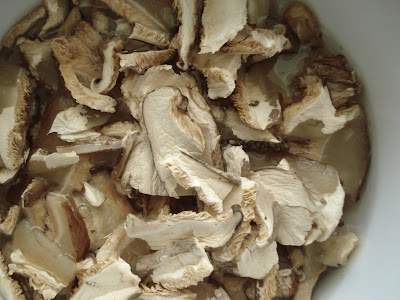Down to the Lake
It seemed so unlikely, and yet... It was hot and muggy. In London, of all places. Just in time for the solstice, Summer made an appearance. It felt like being back in Canada. Though not quite as hot as a Quebec summer, it was just as unbearable. Were I back in Montreal, I would have headed for the cottage -despite the black flies and the mosquitoes. Scampered down those one hundred and seventy six steps to the lake, and a not so graceful plunge into the deep, dark waters. It would be daunting, because the water is bracing this early in the season. But it would be such relief from the heat. And I would remain in the water until my fingers and toes -and perhaps, even my elbows- would get wrinkly as prunes.
But, given that it would take about 9 hours, 6 time zones, and more money than I can spare right now to get to the family cottage, I settled for a two hour walk across central London, meandering through parks and squares, and once I got home, tucked in a Japanese summer fave: zaru soba. It literally means buckwheat noodles in a basket, and in its absolute bare-bones form, that's all there would be to the dish: chilled buckwheat noodles on a bamboo colander, and a bowl of ice-cold broth.
However, most households, and the better pubs, in Japan serve all sorts of garnishes alongside the basket of noodles. Strips of nori seaweed (the very same one used in sushi rolls), slivers of green onions, and shredded leaves of green shiso are staples, but my mum likes to add julienned cucumber and ribbons of paper-thin omelet.
Initial preparations for this dish are time consuming, but with a little planning, it is a cinch, and you could end up with the makings of several meals. Tsuyu is the all-purpose broth of Japanese cooking: served warm, it is the dipping sauce for tempura and fried tofu; served chilled, it is the dipping sauce for all sorts of cold noodles. It is usually made with hon dashi, a bonito (skipjack tuna)-based stock, but I am posting a vegetarian version made with dried shitake mushrooms.
Tsuyu (Japanese broth)
Yields about 750ml/1¼ quart
6 whole dried shitake mushrooms, or a small handful of sliced, dried mushrooms
6 Tbs soy sauce (use a Japanese brand, or a light Chinese sauce)
4 Tbs sugar
Soak the mushrooms in enough cold water to cover.
After about 15 minutes, squeeze the mushrooms dry. They can be discarded at this point, but I like to slice them, and add them to the cooking stock. Reserve the soaking liquor.
Bring 500ml/1 quart of cold water to a simmer.
Add the soaking liquor to the pot, making sure to discard any grit at the bottom of the bowl.
Stir in the sugar and soy sauce.
When the sugar is fully dissolved, add the rehydrated shitake, if desired.
Leave to simmer for about 15 minutes.
After it has cooled to room temperature, chill until ready to use.
This recipe can easily be doubled, and the broth will keep for at least a week in the fridge. To keep it longer, freeze in little jars. This tsuyu can also be used as a base for a hot noodle soup, but you will probably need to let it down a bit, as the above proportions will give you an intensely flavoured broth. Dried, sliced shitake and soba noodles can be found in most supermarkets and natural food stores, but for whole mushrooms (and a more intense flavour) you will need to go to an Asian market. If you have access to an Asian shop, you can most likely find dashi base, which can be used instead of the shitake.
The Japanese have a strong sense of the convenient, and most dried noodles come packaged in little bundles: one bundle is a single portion. Soba noodles are cooked like any pasta, however, as they are to be served chilled, they should be cooked beyond the al dente stage. Most packagings will have instructions on how to cook them, but a little trick my grandfather taught me for perfect noodles is to let the pot of noodles come back to a rumbling boil, throw in a glassful of cold water, cover the pot, and turn off the heat. Wait about 4 minutes before draining the noodles, rinse under running water until cold, and leave to drain in a colander until ready to serve. The cooking water of soba noodles is traditionally kept and served at the end of the meal. Buckwheat tea is said to be great for lowering blood pressure.
The shredded omelette is basically a thin pancake cut into ribbons. Count on one egg per person. Shiso leaves can be a little difficult to find, even if you have an Asian supermarket nearby, but they can be omitted altogether or substituted with Thai basil (normal basil could also do in a pinch.) The cooked shitake can be served on the side. To plate up, mound the garnishes on a sharing plate; place the colander of noodles on a dish; and divvy up the tsuyu into individual bowls, about 125ml/½ cup each should be enough. To eat, a few pinches of garnish are dropped in the bowl of broth. A few strands of noodles (enough for a small mouthful) are dipped in, and eaten in one go with some of the garnish.
When the meal is done, the cooking water (soba yu) is poured into each bowl of remaining broth, and drunk up. If chopsticks are not your favourite eating utensils, the soba and garnishes can be dressed with the tsuyu and eaten like a salad. Also, for a little extra zing, mix in a dab of wasabi.
Bon app'!











Comments
Post a Comment